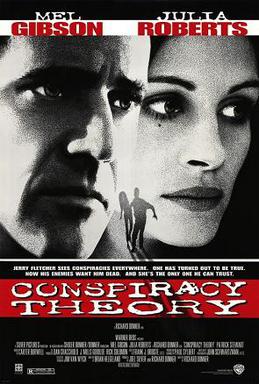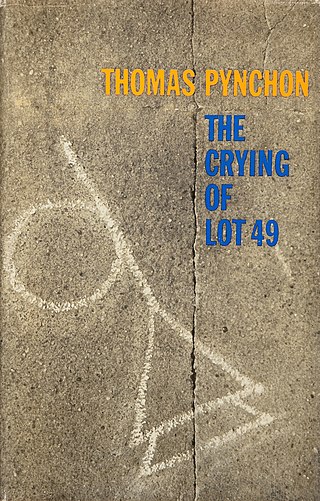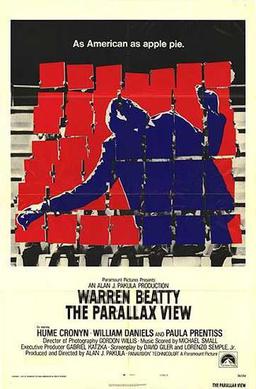Spy fiction is a genre of literature involving espionage as an important context or plot device. It emerged in the early twentieth century, inspired by rivalries and intrigues between the major powers, and the establishment of modern intelligence agencies. It was given new impetus by the development of fascism and communism in the lead-up to World War II, continued to develop during the Cold War, and received a fresh impetus from the emergence of rogue states, international criminal organizations, global terrorist networks, maritime piracy and technological sabotage and espionage as potent threats to Western societies. As a genre, spy fiction is thematically related to the novel of adventure, the thriller and the politico-military thriller.

Thomas Ruggles Pynchon Jr. is an American novelist noted for his dense and complex novels. His fiction and non-fiction writings encompass a vast array of subject matter, genres and themes, including history, music, science, and mathematics. For Gravity's Rainbow, Pynchon won the 1973 U.S. National Book Award for Fiction.

The Illuminatus! Trilogy is a series of three novels by American writers Robert Shea and Robert Anton Wilson, first published in 1975. The trilogy is a satirical, postmodern, science fiction–influenced adventure story; a drug-, sex-, and magic-laden trek through a number of conspiracy theories, both historical and imaginary, related to the authors' version of the Illuminati. The narrative often switches between third- and first-person perspectives in a nonlinear narrative. It is thematically dense, covering topics like counterculture, numerology, and Discordianism.

Soylent Green is a 1973 American ecological dystopian thriller film directed by Richard Fleischer, and starring Charlton Heston, Leigh Taylor-Young, and Edward G. Robinson in his final film role. It is loosely based on the 1966 science-fiction novel Make Room! Make Room! by Harry Harrison, with a plot that combines elements of science fiction and a police procedural. The story follows a murder investigation in a dystopian future of dying oceans and year-round humidity caused by the greenhouse effect, with the resulting pollution, depleted resources, poverty, and overpopulation. In 1973, it won the Nebula Award for Best Dramatic Presentation and the Saturn Award for Best Science Fiction Film.

Crime fiction, detective story, murder mystery, mystery novel, and police novel are terms used to describe narratives that centre on criminal acts and especially on the investigation, either by an amateur or a professional detective, of a crime, often a murder. It is usually distinguished from mainstream fiction and other genres such as historical fiction or science fiction, but the boundaries are indistinct. Crime fiction has several subgenres, including detective fiction, courtroom drama, hard-boiled fiction, and legal thrillers. Most crime drama focuses on crime investigation and does not feature the courtroom. Suspense and mystery are key elements that are nearly ubiquitous to the genre.

Conspiracy Theory is a 1997 American political action thriller film directed by Richard Donner. Starring Mel Gibson, Julia Roberts and Patrick Stewart, the original screenplay by Brian Helgeland centers on an eccentric taxi driver who believes many world events are triggered by government conspiracies, and the Justice Department attorney who becomes involved in his life. The film was a financial success, but critical reviews were mixed.

The Crying of Lot 49 is a 1966 novella by the American author Thomas Pynchon. The shortest of Pynchon's novels, the plot follows Oedipa Maas, a young Californian woman who begins to embrace a conspiracy theory as she possibly unearths a centuries-old feud between two mail distribution companies. One of these companies, Thurn and Taxis, actually existed, operating from 1806 to 1867, and was the first private firm to distribute postal mail. Like most of Pynchon's writing, The Crying of Lot 49 is often described as postmodernist literature. Time included the novel in its "TIME 100 Best English-Language Novels from 1923 to 2005".

The Parallax View is a 1974 American political thriller film starring Warren Beatty, with Hume Cronyn, William Daniels and Paula Prentiss in support. Produced and directed by Alan J. Pakula, its screenplay is by David Giler and Lorenzo Semple Jr., based on the 1970 novel by Loren Singer. The story concerns a reporter's investigation into a secretive organization, the Parallax Corporation, whose business is political assassination.

Mystery is a fiction genre where the nature of an event, usually a murder or other crime, remains mysterious until the end of the story. Often within a closed circle of suspects, each suspect is usually provided with a credible motive and a reasonable opportunity for committing the crime. The central character is often a detective, who eventually solves the mystery by logical deduction from facts presented to the reader. Some mystery books are non-fiction. Mystery fiction can be detective stories in which the emphasis is on the puzzle or suspense element and its logical solution such as a whodunit. Mystery fiction can be contrasted with hardboiled detective stories, which focus on action and gritty realism.

Thriller is a genre of fiction with numerous, often overlapping, subgenres, including crime, horror, and detective fiction. Thrillers are characterized and defined by the moods they elicit, giving their audiences heightened feelings of suspense, excitement, surprise, anticipation and anxiety. This genre is well suited to film and television.

Gravity's Rainbow is a 1973 novel by American writer Thomas Pynchon. The narrative is set primarily in Europe at the end of World War II and centers on the design, production and dispatch of V-2 rockets by the German military. In particular, it features the quest undertaken by several characters to uncover the secret of a mysterious device, the Schwarzgerät, which is slated to be installed in a rocket with the serial number "00000".
Rambo is an American media franchise centered on a series of action films featuring John J. Rambo. The five films are First Blood (1982), Rambo: First Blood Part II (1985), Rambo III (1988), Rambo (2008), and Rambo: Last Blood (2019). Rambo is a United States Army Special Forces veteran played by Sylvester Stallone, whose Vietnam War experience traumatized him but also gave him superior military skills, which he has used to fight corrupt police officers, enemy troops and drug cartels. First Blood is an adaptation of the 1972 novel First Blood by David Morrell.

Crime films, in the broadest sense, is a film genre inspired by and analogous to the crime fiction literary genre. Films of this genre generally involve various aspects of crime and its detection. Stylistically, the genre may overlap and combine with many other genres, such as drama or gangster film, but also include comedy, and, in turn, is divided into many sub-genres, such as mystery, suspense or noir.
The Federal Bureau of Investigation (FBI) has been a staple of American popular culture since its christening in 1935. That year also marked the beginning of the popular "G-Man" phenomenon that helped establish the Bureau's image, beginning with the aptly titled James Cagney movie, G Men. Although the detective novel and other police-related entertainment had long enthralled audiences, the FBI itself can take some of the credit for its media prominence. J. Edgar Hoover, the Bureau's "patriarch", took an active interest to ensure that it was not only well represented in the media, but also that the FBI was depicted in a heroic, positive light and that the message, "crime doesn't pay", was blatantly conveyed to audiences. The context, naturally, has changed profoundly since the 1930s "war on crime", and especially so since Hoover's death in 1972.

Tech-noir is a hybrid genre of fiction, particularly film, combining film noir and science fiction, epitomized by Ridley Scott's Blade Runner (1982) and James Cameron's The Terminator (1984). The tech-noir presents "technology as a destructive and dystopian force that threatens every aspect of our reality".
A political thriller is a thriller that is set against the backdrop of a political power struggle, high stakes and suspense is the core of the story. The genre often forces the audiences to consider and understand the importance of politics. The stakes in these stories are immense, and the fate of a country is often in the hands of one individual. Political corruption, organized crime, terrorism, and warfare are common themes.
The John F. Kennedy assassination and the subsequent conspiracy theories surrounding it have been discussed, referenced, or recreated in popular culture numerous times.

Thriller film, also known as suspense film or suspense thriller, is a broad film genre that evokes excitement and suspense in the audience. The suspense element found in most films' plots is particularly exploited by the filmmaker in this genre. Tension is created by delaying what the audience sees as inevitable, and is built through situations that are menacing or where escape seems impossible.












